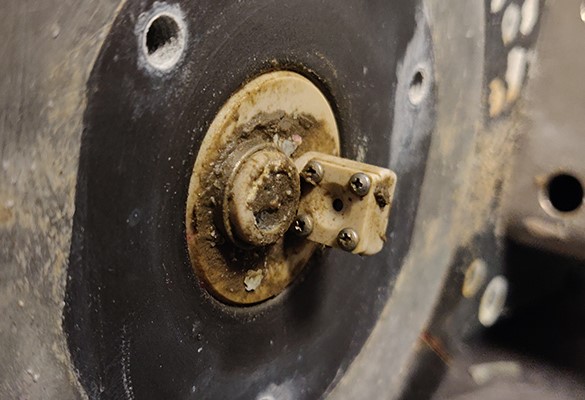This Shallow SeaFET that produced the noisy pH External values had damage and fouling on the external reference electrode. The external reference electrode provides a reference voltage by reacting to the number of chloride ions in seawater. When damaged or fouled, it cannot accurately “count” the nearby chloride ions, resulting in incorrect data. Like the internal reference, damage can occur from improper storage—filling the wet cap with a freshwater solution can lead to rapid degradation of the Ag/AgCl reference electrode. Biofouling can occur in any environment when antifoulant cartridges are not installed, and sediment fouling can occur when deployed with the wrong deployment orientation in high-sediment areas (as shown with the Deep SeapHOx above).

